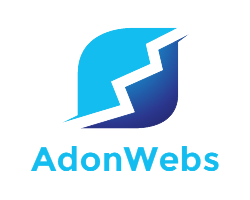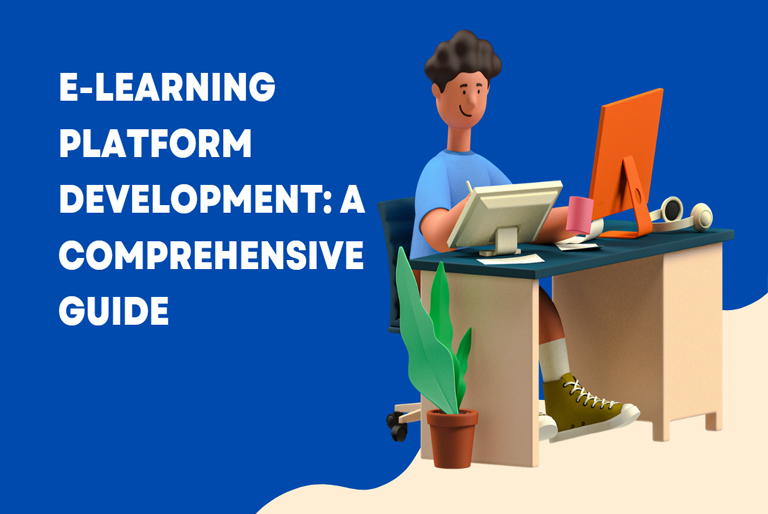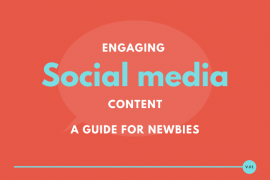E-Learning Platform Development: A Comprehensive Guide
Introduction
The rise of digital technology has transformed education, making learning more accessible and flexible than ever before. E-learning platforms have become crucial tools for both educational institutions and businesses, offering personalized and scalable learning experiences.
These platforms provide a wide range of educational resources, from video lectures and quizzes to interactive content and live webinars, allowing students to learn at their own pace and convenience.
- Key Features of an E-Learning Platform
E-learning platforms are designed to meet the needs of both learners and educators. They can vary in scope from simple online courses to more complex virtual classrooms and full-scale learning management systems (LMS).
Below are the core features that make up an effective e-learning platform development.
1.1. User Management
A robust user management system is crucial for maintaining a secure and personalized learning environment. Features include:
- User Profiles: For tracking learner progress, preferences, and performance.
- Role-Based Access: Ensures that users (learners, teachers, administrators) have appropriate access to resources and tools.
- Authentication & Authorization: Ensures privacy and security for all users, with features like single sign-on (SSO) and two-factor authentication (2FA).
1.2. Course Management
Course management tools allow instructors to create, update, and organize learning materials. Key components include:
- Course Creation Tools: Allow instructors to build and organize courses with multimedia content (videos, readings, quizzes, etc.).
- Progress Tracking: Enables instructors and students to track completion and performance.
- Assessment & Grading: Includes quizzes, exams, assignments, and automated grading systems.
1.3. Communication Tools
Effective communication is essential in e-learning. Common features include:
- Discussion Forums: For collaborative learning and peer-to-peer interaction.
- Messaging Systems: For direct communication between students and instructors.
- Video Conferencing: For live classes, one-on-one tutoring, or group discussions.
1.4. Gamification and Engagement
Integrating gamification elements can increase engagement and motivation. These include:
- Badges and Certificates: Reward systems for achievements and course completions.
- Leaderboards: Displaying top performers to foster competition.
- Interactive Quizzes and Polls: To make learning more engaging and interactive.
1.5. Multimedia Content Support
An e-learning platform should support a variety of content formats to ensure that it can cater to different learning styles. This includes:
- Video and Audio: For lectures, tutorials, and webinars.
- Interactive Simulations: To provide hands-on learning experiences.
- Document Sharing: For distributing readings, guides, and supplementary materials.
1.6. Mobile Compatibility
As learners increasingly use smartphones and tablets for education, ensuring that the platform is mobile-friendly is essential. This includes responsive design or dedicated mobile apps for iOS and Android.
1.7. Reporting and Analytics
Analytics tools allow both instructors and administrators to track learner progress, identify trends, and improve the learning experience. Features include:
- Performance Dashboards: To monitor course completion rates and student engagement.
- Data Insights: To help educators identify areas where students are struggling.
- Technologies Used in E-Learning Platform Development
To build a successful e-learning platform, various technologies come into play. These technologies ensure that the platform is functional, scalable, and secure.
2.1. Learning Management Systems (LMS)
An LMS is the backbone of most e-learning platforms. Popular open-source and commercial LMS platforms include Moodle, Blackboard, and Canvas. They offer tools for course creation, management, and communication, and they provide a foundation for the development of a custom platform.
2.2. Content Management Systems (CMS)
A CMS is essential for managing the content on an e-learning platform. It enables instructors to create and organize content and ensures that it’s easy to update. WordPress and Drupal are commonly used CMS platforms for e-learning.
2.3. Cloud Computing
Cloud services (like Amazon Web Services, Microsoft Azure, and Google Cloud) ensure that e-learning platforms are scalable, reliable, and capable of handling large volumes of users.
They also help with the storage and streaming of content, ensuring smooth delivery of video lectures and real-time interactions.
2.4. Mobile Development Frameworks
For mobile-friendly e-learning platforms, development frameworks like React Native, Flutter, and Xamarin enable cross-platform app development. These frameworks ensure a consistent experience for both iOS and Android users.
2.5. Artificial Intelligence (AI)
AI can be used in various ways to enhance the e-learning experience:
- Personalized Learning: AI can analyze student behavior and learning patterns to suggest personalized learning paths.
- Chatbots: AI-powered chatbots can answer student queries, provide guidance, and simulate tutors.
- Automated Grading: AI can be used to grade assignments, quizzes, and even essays with high accuracy.
2.6. Video Streaming Technologies
Video content is a cornerstone of many e-learning platforms. Technologies like WebRTC, HLS (HTTP Live Streaming), and RTMP (Real-Time Messaging Protocol) ensure smooth video delivery for live classes and recorded content.
- Developing a Custom E-Learning Platform
While there are many out-of-the-box solutions for e-learning, businesses or institutions looking for a more tailored experience often choose to develop a custom platform. This process includes several stages, each of which is vital to the success of the project.
3.1. Requirement Analysis
The first step in developing a custom e-learning platform is to conduct a thorough analysis of the requirements.
This includes identifying the target audience, defining the educational objectives, and understanding the desired features (such as gamification, certifications, or multimedia content).
For example, if the platform is for a corporate environment, it may need to support training modules and track employee progress.
3.2. Platform Design
The design phase includes both the user experience (UX) and user interface (UI) design. The platform needs to be easy to use, visually appealing, and accessible on multiple devices. Wireframes, mockups, and prototypes are created to give stakeholders a visual idea of the platform’s layout.
3.3. Development and Testing
Once the design is finalized, the development phase begins. Developers use the appropriate tech stack (e.g., HTML5, CSS3, JavaScript, Python, or PHP) to build the platform.
The development process also involves integrating third-party tools and services (e.g., payment gateways, content management systems, or video conferencing tools).
Simultaneously, quality assurance (QA) testing is performed to ensure that the platform is bug-free and functions as expected. This includes both manual and automated testing for usability, functionality, security, and performance.
3.4. Deployment
After the platform is developed and tested, it is ready for deployment. This may involve launching the platform on a cloud service or on-premise, depending on the organization’s needs. A robust hosting solution and backup strategies are essential to ensure continuous access to the platform.
3.5. Post-Launch Support and Updates
Once the platform is live, ongoing maintenance is required to ensure that it remains up-to-date, secure, and functional. This includes regular software updates, bug fixes, and the addition of new features based on user feedback.
- Challenges in E-Learning Platform Development
While developing an e-learning platform can offer immense value, several challenges need to be addressed:
4.1. Scalability
As the platform grows, it needs to scale to handle more users, more content, and more data. A scalable infrastructure (often cloud-based) is essential to ensure smooth performance during peak usage times.
4.2. User Engagement
Keeping users engaged in an e-learning environment can be challenging. Without the traditional classroom structure, students may feel disconnected or demotivated. Gamification, interactive elements, and social learning tools can help maintain engagement.
4.3. Security and Privacy
Given the sensitive nature of user data, security and privacy are critical in e-learning platforms. Secure payment processing, data encryption, and adherence to privacy regulations (like GDPR) are necessary to protect users and build trust.
4.4. Content Accessibility
Ensuring that content is accessible to all learners, including those with disabilities, is a key challenge. The platform should support features such as subtitles, text-to-speech, and other assistive technologies.
- Choosing the Best E-Learning Platform
Selecting the right e-learning platform is crucial for meeting the educational goals of your audience. The best platform will depend on various factors such as the type of content, target audience, and specific features needed.
For example, much like how selecting the right character class in a game such as Throne and Liberty can influence the gameplay experience, choosing the right e-learning platform can shape the learning journey.
In the game, players have to decide on the right class based on their playstyle, just as learners need to find a platform that suits their learning preferences.











